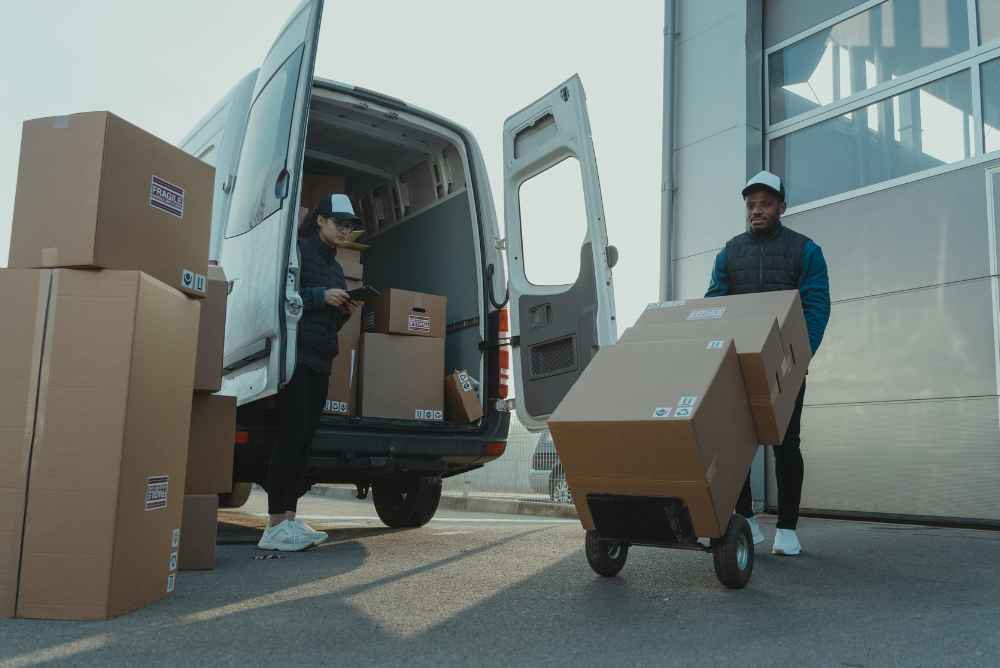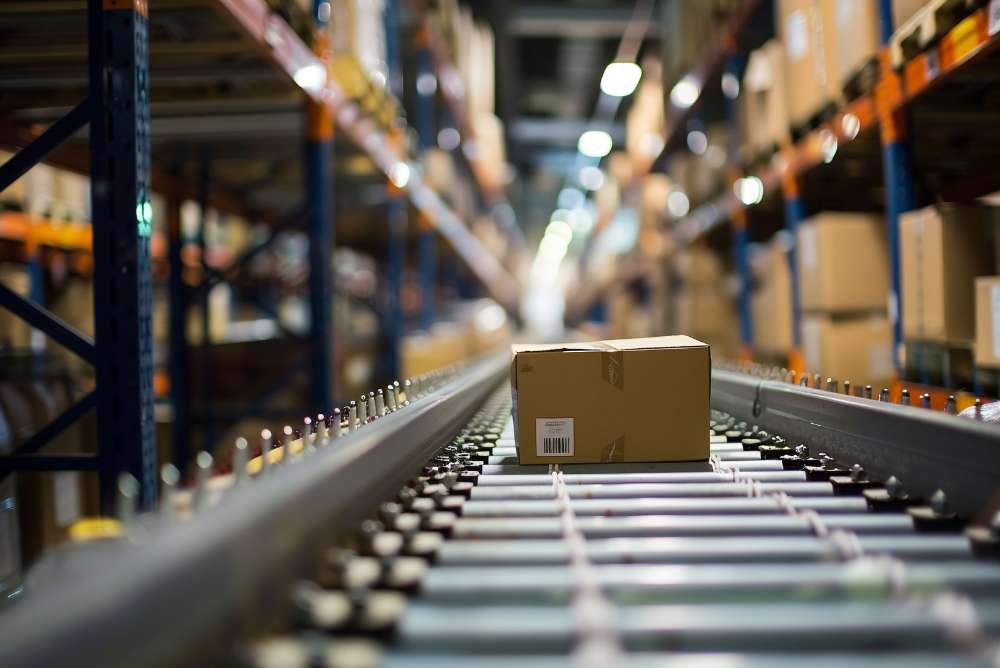Partnering with a third-party logistics provider (3PL) is a smart choice for businesses looking to streamline their supply chain, reduce operational costs, and enhance efficiency. The 3PL industry has seen remarkable growth, with revenue increasing at an annual rate of 4.8% over the past five years, including a 6.8% rise in 2024. However, ensuring a fruitful collaboration requires avoiding common mistakes that can hinder the partnership.
By understanding these pitfalls and how to address them, businesses in NJ can maximize the benefits of working with a third-party logistics provider.
Key Takeaways
✔ Inconsistent communication leads to shipment delays, inventory issues, and customer dissatisfaction. Establish clear protocols, use technology for real-time updates, and assign specific points of contact to ensure transparency.
✔ A lack of shared objectives between a business and its logistics provider results in inefficiencies. Align long-term goals, involve the provider in strategic planning, and customize logistics solutions for better integration.
✔ Failing to track KPIs like delivery accuracy and costs can obscure inefficiencies. Regularly review performance data and use it to drive improvements and accountability.
✔ Rushing the vetting process risks partnering with an ill-equipped provider. Conduct due diligence by reviewing capabilities, visiting facilities, and checking financial stability.
✔ A rigid logistics provider struggles with market shifts and scaling demands. Prioritize adaptability by planning for scalability, embracing new technologies, and regularly reassessing logistics requirements.
How to Choose the Right Third Party Logistics Provider
Selecting the right third party logistics provider is a strategic decision that can make or break a business’s supply chain efficiency. A well-suited provider does more than just move goods; they become a valuable partner in achieving business goals, reducing costs, and enhancing customer satisfaction.
1. Understand Business Needs
Before selecting a third party logistics provider, businesses must evaluate their unique logistics requirements. Understanding these needs helps identify a provider capable of delivering tailored solutions. Consider the following:
- Storage Needs: Assess whether the inventory requires specialized storage, such as climate control for perishable items or hazardous material handling. Determine storage volume to ensure the provider has adequate capacity.
- Transportation Requirements: Decide whether the logistics operations involve local, regional, or international shipping. Consider additional needs like last-mile delivery services, which are increasingly important for e-commerce businesses.
- Scalability: A 3PL provider should have the capacity to scale alongside the business, accommodating increased shipment volumes, expanded service areas, or new product categories.
- Specialized Services: Identify specific needs such as reverse logistics for returns, cross-docking for faster distribution, or kitting services for assembly.
2. Evaluate Experience and Expertise
A provider’s experience and industry knowledge significantly impact their ability to deliver effective solutions. Different industries have distinct logistical challenges, and a provider familiar with these nuances can offer tailored strategies.
- E-Commerce Businesses: Providers must handle high shipping volumes, process returns efficiently, and ensure fast delivery times to maintain customer satisfaction.
- Manufacturing Firms: Bulk transportation, inventory replenishment, and adherence to just-in-time (JIT) principles are often priorities.
- Retail Chains: Multi-location distribution requires robust network management, especially during peak seasons when demand spikes.
3. Assess Technology and Innovation
A third party logistics provider that leverages advanced tools can offer greater transparency, efficiency, and control.
- Real-Time Tracking: Providers with GPS-enabled tracking allow businesses to monitor shipments in transit.
- Inventory Management Systems: Tools that integrate with a business’s existing systems simplify inventory tracking and replenishment.
- Data Analytics and Forecasting: Advanced analytics can help predict demand patterns, optimize routes, and identify cost-saving opportunities.
- Automation and Robotics: Some providers use warehouse automation for faster order picking and packing, which reduces errors and improves speed.
4. Check References and Reviews
Reputation is a critical factor when choosing a third party logistics provider. Past performance often predicts future reliability.
- Client Testimonials: Request testimonials from current or former clients in similar industries. Focus on details regarding the provider’s reliability, responsiveness, and problem-solving capabilities.
- Case Studies: Look for examples of challenges the provider has successfully overcome, such as scaling operations for a growing business or handling complex international shipments.
- Third-Party Reviews: Use independent review platforms to get unbiased feedback. These reviews can reveal recurring issues or highlight strengths.
- Direct Conversations: Speak with clients directly to gain deeper insights into the provider’s performance, responsiveness, and commitment to meeting expectations.
5. Review Contracts Thoroughly
A clear and comprehensive contract forms the backbone of any 3PL partnership. It ensures both parties understand their responsibilities and sets the foundation for a successful relationship.
- Service Level Agreements (SLAs): Define measurable performance standards, such as delivery times, order accuracy rates, and issue resolution timelines. SLAs provide accountability and a basis for evaluating the provider’s performance.
- Cost Transparency: Ensure the contract details all costs, including potential fees for additional services like expedited shipping or seasonal scaling. Hidden costs can erode profitability, so clarity is essential.
- Flexibility and Scalability: A robust contract should include provisions for adapting to changes in business needs. This might include expanding service coverage, modifying volume thresholds, or renegotiating terms as the partnership evolves.
- Dispute Resolution: Include clauses that outline procedures for resolving conflicts, such as mediation or arbitration, to prevent misunderstandings from escalating.
5 Common Mistakes to Avoid When Working With a Third Party Logistics Provider
Even with a reliable provider in place, certain errors can derail the partnership. Avoiding these mistakes ensures smoother operations and a mutually beneficial relationship.
1. Poor Communication Practices
Effective communication is the backbone of any successful business relationship, particularly when working with a third party logistics provider. In logistics, where timing and precision are critical, poor communication can ripple through the supply chain, causing disruptions that are often costly. By creating a structured approach to communication, businesses can enhance collaboration with their third party logistics provider and build trust over time.
The Problem
Unclear or inconsistent communication can manifest in several ways, such as:
- Shipment Delays: If updates about shipment schedules, routes, or conditions are not shared promptly, businesses may face unexpected delivery delays.
- Inventory Mismanagement: Without real-time information about stock levels, businesses might overstock or understock, leading to increased costs or missed sales opportunities.
- Customer Disappointment: Poor communication ultimately affects the end customer, as delays or errors in delivery reflect poorly on the business, not the logistics provider.
How to Avoid It
To foster clear and consistent communication:
- Set Clear Expectations: Establish detailed communication protocols. Agree on the frequency and format of updates, such as daily reports, weekly meetings, or monthly performance reviews.
- Leverage Technology: Use cloud-based tools that allow all stakeholders to access shipment data in real time. Implement automated notifications for shipment status changes, ensuring transparency at every stage.
- Assign Points of Contact: Designate representatives who are responsible for managing and streamlining communication on both sides. These individuals should have the authority to resolve issues quickly and escalate critical matters when needed.
- Document Communication: Keep records of discussions, agreements, and changes in plans to avoid misunderstandings and create accountability.
2. Misalignment of Goals and Strategies
A third party logistics provider should act as an extension of the business, seamlessly integrating into its operations. However, when goals and strategies are not aligned, inefficiencies and missed opportunities become unavoidable.
The Problem
Misalignment often arises when:
- Business Objectives Differ: The logistics provider may prioritize cost savings, while the business focuses on fast deliveries.
- Lack of Strategic Input: Providers are excluded from key business decisions, making it difficult for them to adapt their strategies accordingly.
- Resource Mismanagement: Resources may be allocated inefficiently, such as prioritizing low-impact tasks over critical operations.
How to Avoid It
To align strategies and goals:
- Define Long-Term Goals: Share business objectives, such as expanding into international markets, reducing delivery times, or enhancing sustainability efforts. Create a roadmap that includes milestones the third party logistics provider can support.
- Involve the Provider in Strategic Planning: Hold quarterly or biannual strategy sessions to review progress, identify challenges, and refine logistics plans. Encourage input from the provider, as their expertise can offer innovative solutions.
- Customize Solutions: Collaborate on tailored logistics strategies, such as designing unique delivery routes for high-priority customers or implementing specialized storage solutions for fragile goods.
3. Ignoring Key Performance Metrics
Performance metrics are the benchmarks that measure the success of a logistics operation. Ignoring these metrics leaves businesses unable to gauge the effectiveness of their third party logistics provider and may result in inefficiencies that go unnoticed.
The Problem
Without tracking performance, businesses risk:
- Operational Blind Spots: Without visibility into areas like delivery accuracy or inventory turnover, inefficiencies may persist unchecked.
- Unmet Expectations: If KPIs are not clearly defined, businesses and providers may have differing views of what constitutes success.
- Lost Opportunities: Metrics often reveal patterns or trends that can guide process improvements, which are missed without proper monitoring.
How to Avoid It
To effectively track and use performance metrics:
- Define Key Performance Indicators (KPIs):
- On-Time Delivery Rate: Measures how reliably shipments meet promised delivery times.
- Order Accuracy: Tracks whether orders are delivered with the correct items, quantities, and conditions.
- Cost Per Shipment: Helps analyze and control logistics expenses.
- Warehouse Efficiency: Assesses how quickly and accurately goods are received, stored, and dispatched.
- Review Metrics Regularly: Schedule monthly or quarterly performance reviews with the third party logistics provider. Use these reviews to identify underperforming areas and implement corrective measures.
- Use Data for Continuous Improvement: Analyze performance trends to predict future challenges and optimize logistics strategies accordingly.
4. Skipping Thorough Vetting
Choosing the right third party logistics provider is critical, and skipping a thorough vetting process can lead to long-term challenges. A rushed decision may result in poor service quality, hidden costs, or even a complete breakdown in operations.
The Problem
Without proper research, businesses risk:
- Inadequate Resources: Providers may lack the infrastructure, technology, or expertise needed to meet the business’s needs.
- Service Disruptions: A poorly vetted provider may struggle to handle unexpected demands, such as seasonal spikes or urgent orders.
- Hidden Costs: Contracts that are not carefully reviewed may include additional fees or unclear terms.
How to Avoid It
To ensure the provider is a good fit:
- Request Proposals:Compare pricing, services, and capabilities from multiple providers to find the best match. Look for providers that specialize in the industry’s unique logistics requirements.
- Visit Facilities: Tour the provider’s warehouses, transportation hubs, and offices to assess their operational capabilities. Verify that their facilities can handle the volume and type of goods the business manages.
- Review Financial Stability: Request financial statements to ensure the provider is solvent and capable of sustaining long-term operations. Check their track record of handling large clients or complex supply chains.
5. Inability to Adapt to Changing Needs
The logistics industry is dynamic, with evolving technologies, market demands, and customer expectations. Businesses that fail to adapt risk falling behind, and their third party logistics provider must keep pace to remain a valuable partner.
The Problem
When adaptability is lacking, businesses may experience:
- Operational Bottlenecks: A provider that cannot scale operations during peak seasons may delay deliveries or overburden warehouse facilities.
- Missed Market Opportunities: Inability to expand into new regions or adopt innovative technologies limits growth potential.
- Customer Dissatisfaction: Rigid processes can lead to delays or errors that negatively impact the customer experience.
How to Avoid It
To stay agile and adaptable:
- Plan for Scalability: Partner with a third party logistics provider capable of handling increased demand during busy periods. Ensure the provider has contingency plans for unexpected events, such as supply chain disruptions.
- Embrace Technological Advances: Use tools like predictive analytics to anticipate market trends and prepare logistics strategies accordingly. Implement automation to improve efficiency in tasks like order processing and inventory management.
- Regularly Reassess Needs: Schedule periodic evaluations of the partnership to ensure it continues to meet business requirements. Discuss upcoming changes in market demands or company goals to align strategies proactively.

How to Maximize Your Partnership with a Third Party Logistics Provider
Avoiding common mistakes is just the first step in creating a productive relationship with a third party logistics provider. To truly leverage the benefits of this partnership, businesses must actively engage and nurture the collaboration.
1. Establish Clear Expectations
Setting clear expectations from the outset ensures both the business and the third party logistics provider are aligned in their objectives and responsibilities.
- Define Roles and Responsibilities: Specify who handles each aspect of the supply chain, such as inventory management, transportation, and returns processing. Ensure there is no overlap or confusion, as this can lead to delays or missed tasks.
- Outline Timelines and Deliverables: Establish precise timelines for processes such as order fulfillment, shipping, and reporting. Include milestones for larger projects, such as scaling operations or implementing new technology.
- Communicate Key Priorities: Highlight specific goals, such as reducing delivery times, cutting costs, or improving customer satisfaction. Align these priorities with measurable outcomes, such as achieving a 98% on-time delivery rate or reducing logistics costs by 10%.
2. Invest in Collaborative Tools
Technology is a cornerstone of modern logistics. Businesses that invest in collaborative tools not only enhance efficiency but also improve communication and transparency with their third party logistics provider.
- Use Real-Time Tracking Systems: Real-time tracking allows businesses to monitor shipments from dispatch to delivery. This visibility improves customer service by providing accurate delivery updates and identifying delays before they escalate.
- Leverage Reporting Dashboards: Dashboards provide a central location for data, making it easy to analyze metrics like delivery times, inventory turnover, and costs. Shared dashboards ensure both the business and the provider have access to the same data, reducing discrepancies and improving decision-making.
- Integrate with Existing Systems: Seamless integration with enterprise resource planning (ERP) or inventory management software ensures data flows effortlessly between systems. This reduces manual errors and enhances the efficiency of tasks like order processing and inventory updates.
3. Be Open to Feedback
Feedback is a powerful tool for continuous improvement. A 2022 study revealed that 73% of shippers and 95% of 3PL providers agreed that utilizing third-party logistics providers significantly enhanced service quality for the shippers’ customers. This statistic underscores the importance of leveraging a 3PL’s insights to improve logistics operations and foster mutual success.
- Encourage Provider Insights: Logistics providers often have deep industry knowledge and experience. Providers can also offer insights into emerging trends, such as shifts in consumer behavior or advancements in logistics technology. Ask for their recommendations on improving processes, reducing costs, or adopting new technologies.
- Address Concerns Constructively: If issues arise, approach them with a problem-solving mindset rather than assigning blame. Work together to identify the root cause and implement corrective actions.
- Implement Feedback Quickly: Demonstrating that feedback leads to tangible changes reinforces the provider’s role as a valued partner. For example, if a provider suggests optimizing delivery routes, act on the suggestion and monitor the results to show its impact.
4. Collaborate on Innovation and Sustainability
To stay competitive in today’s fast-paced market, businesses and their 3PL providers must embrace innovation and prioritize sustainability.
- Adopt Emerging Technologies: Collaborate with the provider to explore technologies such as artificial intelligence for demand forecasting, blockchain for supply chain transparency, or drones for last-mile delivery.
- Focus on Sustainability: Work with the provider to implement eco-friendly practices, such as optimizing delivery routes to reduce fuel consumption or using sustainable packaging materials. Customers increasingly value businesses that prioritize sustainability, making this a shared goal that benefits both parties.
Frequently Asked Questions
What services do third party logistics providers typically offer?
Third party logistics providers (3PLs) offer a range of services including transportation, warehousing, and distribution. They also provide value-added services such as freight forwarding, customs brokerage, packaging, and assembly. These services can be tailored to meet the unique needs of businesses across various industries.
How do third party logistics providers handle international shipping and customs?
3PLs manage international shipping by handling documentation, customs clearance, and compliance with trade regulations. They ensure goods are transported efficiently while navigating the complexities of tariffs and import/export laws. Many providers also offer global networks and partnerships to streamline cross-border logistics.
What are the cost structures commonly used by third party logistics providers?
3PLs use different pricing models such as per-transaction fees, fixed monthly rates, or customized plans based on the scope of services and volume. Pricing may vary depending on factors like distance, storage requirements, and additional services. Businesses should review contracts carefully to understand all associated costs and fees.
How do third party logistics providers ensure the security of goods during transit and storage?
3PLs implement strict security measures, including surveillance cameras, access control systems, and insurance coverage. Many providers use advanced tracking technology to monitor goods in real time and prevent theft or loss. Additionally, warehouses are equipped with robust infrastructure to safeguard goods from damage or unauthorized access.
What role do third party logistics providers play in supply chain sustainability?
3PLs contribute to sustainability by optimizing transportation routes to reduce fuel consumption and emissions. They also use energy-efficient warehouses and implement recycling programs to minimize environmental impact. Many providers work with businesses to create eco-friendly supply chain strategies that align with their sustainability goals.

Ready to Optimize Your Supply Chain? Partner with 3PL Logistics By Best!
Maximize the efficiency of your supply chain with 3PL Logistics By Best, a trusted logistics provider serving businesses across New Jersey. Our team delivers tailored solutions to meet your unique needs. With years of experience and cutting-edge technology, 3PL Logistics By Best in NJ ensures your operations run smoothly and your business stays ahead of the competition.
Contact us to learn more about how our tailored services can support your business in NJ and beyond!

